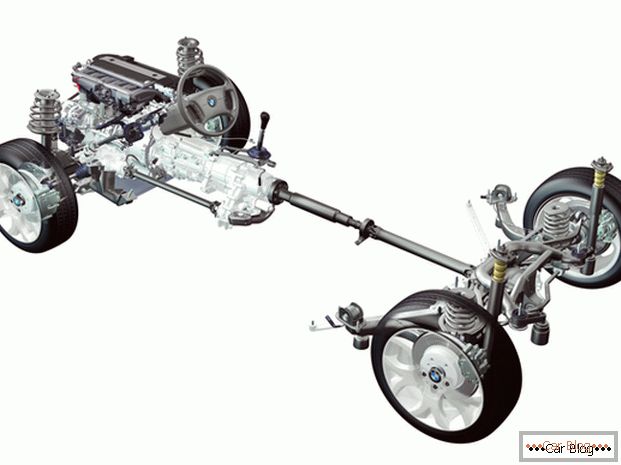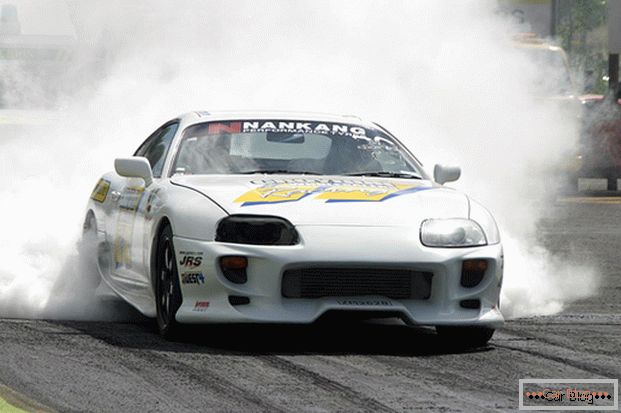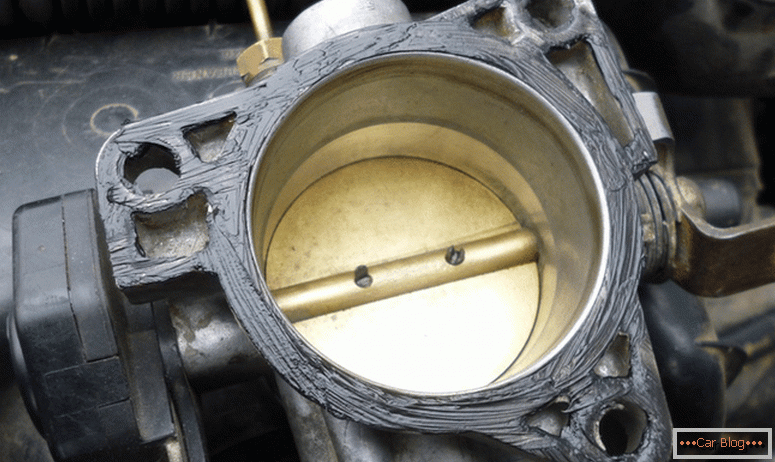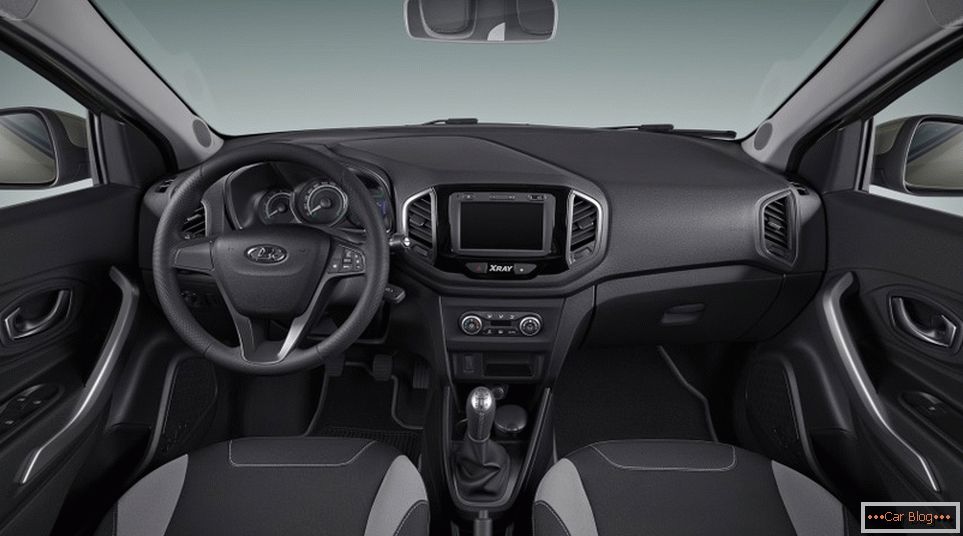>
Which drive do you think is better for a car? Usually this question is answered differently. One likes a front wheel drive car, others like rear wheel drive, and still others do not respect either one or the other, but prefer to drive in all-wheel drive cars. All this forced us to create a kind of rating of the most popular and best drives, which will consider the advantages and disadvantages of these very structures.

Car drive
To date, there are three types of structures of this type: full, back and front. Each has its strengths. If all motorists who consider themselves to be such have surely heard about what it is, they still do not know enough about its design.
Понятие привод подразумевает то, что крутящий момент передается от двигателя непосредственно к колесам и то, на какие именно колеса и на какое их количество будет передаваться крутящий момент и зависит тип данной конструкции. К примеру, если крутящий момент передается на два колеса, то принято говорить о переднем или заднем приводе, если же речь идет о четырех колесах, то это уже полный тип.Читать далее про типы приводов для автомобиля-->
Front-wheel drive or the first pancake lump
The video tells about the first front-wheel drive car in the USSR:
If the difference between the four-wheel drive and the design that transmits torque to the two wheels is clear (only the complete novice does not know that the four connected wheels are an advantage at the same time), then the rear-wheel drive is still compared with the front-wheel drive. And there are drivers who mistakenly believe that the rear type of this design was invented earlier than the front one, and it is time to send it to rest, since this is a long-forgotten classic. Then why the most branded car concerns of the world, such as Mercedes, BMW and Porsche continue to produce cars with rear wheel drive?
What will be the surprise of these people when they learn that the front type of construction in terms of antiquity can argue with the rear. Back in 1764, this type was installed on a steam tractor, which, unfortunately, hit the wall in tests. True, the wall has been damaged more than the machine itself, which for some reason has refused the control system, has become distrustful of front-wheel drive. At first he was scolded, slowly, then they began to openly scold him and, in the end, turned him into oblivion for a while.
What does this work out? The front type of design since then never tried to install on cars again? And is the reason for such unpopularity explained only by this first failure? Not at all. First, the engineers who wanted to establish the front type of construction had a double challenge. They had to take care of the transmission of torque to the front wheels and at the same time think about maintaining the speed of the car, even when turning the wheels. This design implied the use of special devices with hinges, providing equal angular velocities. That is exactly what these semi-axes, invented by talented engineers of the time, were called.

Front wheel drive car
Secondly, the attempt to establish a front-wheel drive was repeated in the middle of the last century, long before the start of the Second World War. This time everything went well. The front design type was equipped with a German car DKV, produced by Auto Union. It was already a sensation. Such cars after this began to come into vogue, they gradually become popular.
The advantage of a front-wheel drive, which in those days becomes a competitor to the rear, is its low cost. Indeed, it was no longer necessary to bother with a cardan shaft, which was not needed at all in cars with this type of design. The car was light, and they were more comfortable driving. Although the risk of crashing into a wall, as it once was with a steam tractor, did not disappear anywhere. After all, front-wheel-drive cars on uneven road surfaces were easily demolished to the side, since the weight was distributed unevenly, and the front of such a car can be compared only with a light feather.
But such cars showed an incredible permeability in the snow and perfectly rolled over the mud and dirt, which could not be said about rear-wheel drive models.
The video tells about the types of car drives:
In fact, it is possible to separately distinguish the advantages and disadvantages of the front type of construction. In particular, the advantages of this type include:
- low cost of conveyor assembly in production;
- the absence of a cardan shaft, which excludes the presence of a central tunnel;
- excellent cross in snow and mud;
- excellent directional stability;
- low weight of the car, endowed with this type.
As for the shortcomings, they include:
- strong vibration, which the driver feels because of too rigid attachment of the engine of such a car;
- the reactive forces of the steering wheel, which are also felt by the driver during intensive acceleration (precisely because of this, the front design type is not installed on cars equipped with an engine with a capacity of more than 250 hp)
- the inability to carry out a sharp start normally, as the weight is redistributed back, because of which the front axle is unloaded and the wheels begin to slip;
- huge risk of demolishing the front of the car, especially on rough roads.
Do not think that because of the cheapness of the front type of construction - the lot of budget cars. Although in percentage terms, this is true, but front-wheel drive is a kind of paradox. It is this type that is installed on most of the budget models and at the same time, it is also installed on some very expensive cars of popular manufacturers.
Rear-wheel drive or classic is always in fashion

Rear wheel drive car
What can I write about rear wheel drive? This is really a classic, which is always in fashion. In our rating, where we consider the types of drives, the rear took second place, second only to full. To be precise, the rear-wheel drive is even more popular than the full one, only in the technical sense it is not mature enough and it is hardly possible.
So what was before: chicken or egg, rear-wheel drive or front? At first, all cars were equipped with a rear constructive type. The motor stood longitudinally, after it the gearbox was installed, then the gimbal and rear axle. Torque is transmitted directly to the drive shaft, which sends the movement to the rear wheels. This distributes the most torque differential, which transmits the torque to the wheels.
As for the location of the engine on rear-wheel drive cars, it could stand both in front and behind, for example, in the case of the once popular Zaporozhets.
Rear-wheel drive would remain indispensable in the automotive industry, if not the appearance of the front. At first, many manufacturers generally forgot about the old and loyal friend, flattered by the cheapness of production. But the advantages and advantages of the rear-wheel drive have not gone away, and after some time they have become popular again.
The video tells the advantages and disadvantages of different car drives:
Highlight its benefits:
- the engine is mounted on elastic elements, which eliminates the rigidity, which can be felt by the body and transmitted to the driver (because of this, such cars feel driving comfort due to the absence of annoying vibrations);
- lack of jet moments during acceleration, which are observed in front-wheel drive cars;
- comfortable sharp start of the car (the weight is not redistributed back and the drive wheels are practically not subject to slipping and loss of traction);
- excellent load distribution along the axes (in particular, the work between the tires is optimally distributed, preventing their rapid wear).
As for the shortcomings, which, unfortunately, the rear type of construction has, it is:
- expensive production, ultimately affecting the price of a car with such a drive;
- the heavy weight of these cars and the presence of the central tunnel, eating up the useful volume of the cabin;
- poor permeability in snow and mud, compared with the same front-wheel drive;
- the possibility of skidding the rear of the car.
No matter how surprising it will be to hear some drivers, but the types of drives, in principle, do not solve anything. In particular, if it concerns car drift, then everything will depend on the skill of the driver, his experience and driving style. An inexperienced driver is equally at risk of skidding on the front-wheel drive and rear-wheel drive and all-wheel drive cars.
Four-wheel drive or innovative technology does not stand still

All-wheel drive car
It's time to introduce the design, which occupies the first place of our rating. Cars endowed with all-wheel drive, have long been famous for their performance and the ability to start without slipping. They feel great on any road surface.
As you know, it is more correct to speak about the types of all-wheel drive than about the full type itself. To date, produce a different four-wheel drive. Torque is distributed unevenly between the rear and front wheels and then it is considered a certain type of such a drive. This type is on cars  Discounts for new cars! Profitable loan from 9.9% installments 0%
Discounts for new cars! Profitable loan from 9.9% installments 0%  adom.ru Lamborghini Gallardo, when 70% of the energy of the torque take the rear wheels, and the remaining 30% - front.
adom.ru Lamborghini Gallardo, when 70% of the energy of the torque take the rear wheels, and the remaining 30% - front.
The second type of all-wheel drive implies a complete distribution of torque to the front axle, but when it is needed, the rear wheels are connected. Front-wheel drive with plug-in rear - this is the name of the type of this design of this type. Mitsubishi Outlander and other SUVs are endowed with just such a drive.
The video tells about the types of all-wheel drive cars:
Finally, when the energy of the torque is distributed equally to the two axles, then we are talking about the third type of all-wheel drive.
Four-wheel drive - this is not only one advantage. He has flaws. In particular, this is a large mass of a car endowed with such a constructive look, as well as the high cost of production. In addition, in some cases, all-wheel drive drivers may even lose controllability, due to uneven distribution of torque.
Again, in conclusion, I would like to reiterate: it all depends on the person, and what kind of drive is on the car is not so important. The main thing is the ability to drive correctly and the driving experience of a vehicle with a certain drive.



